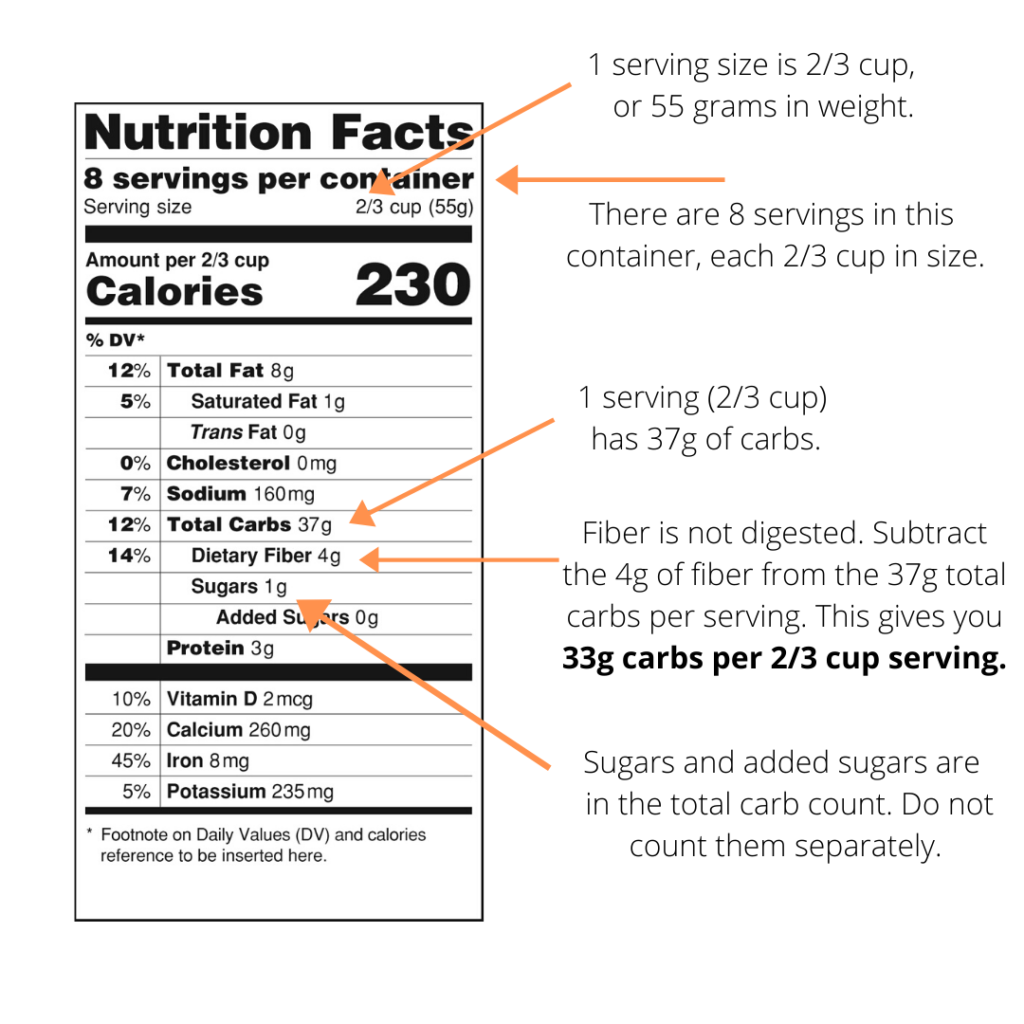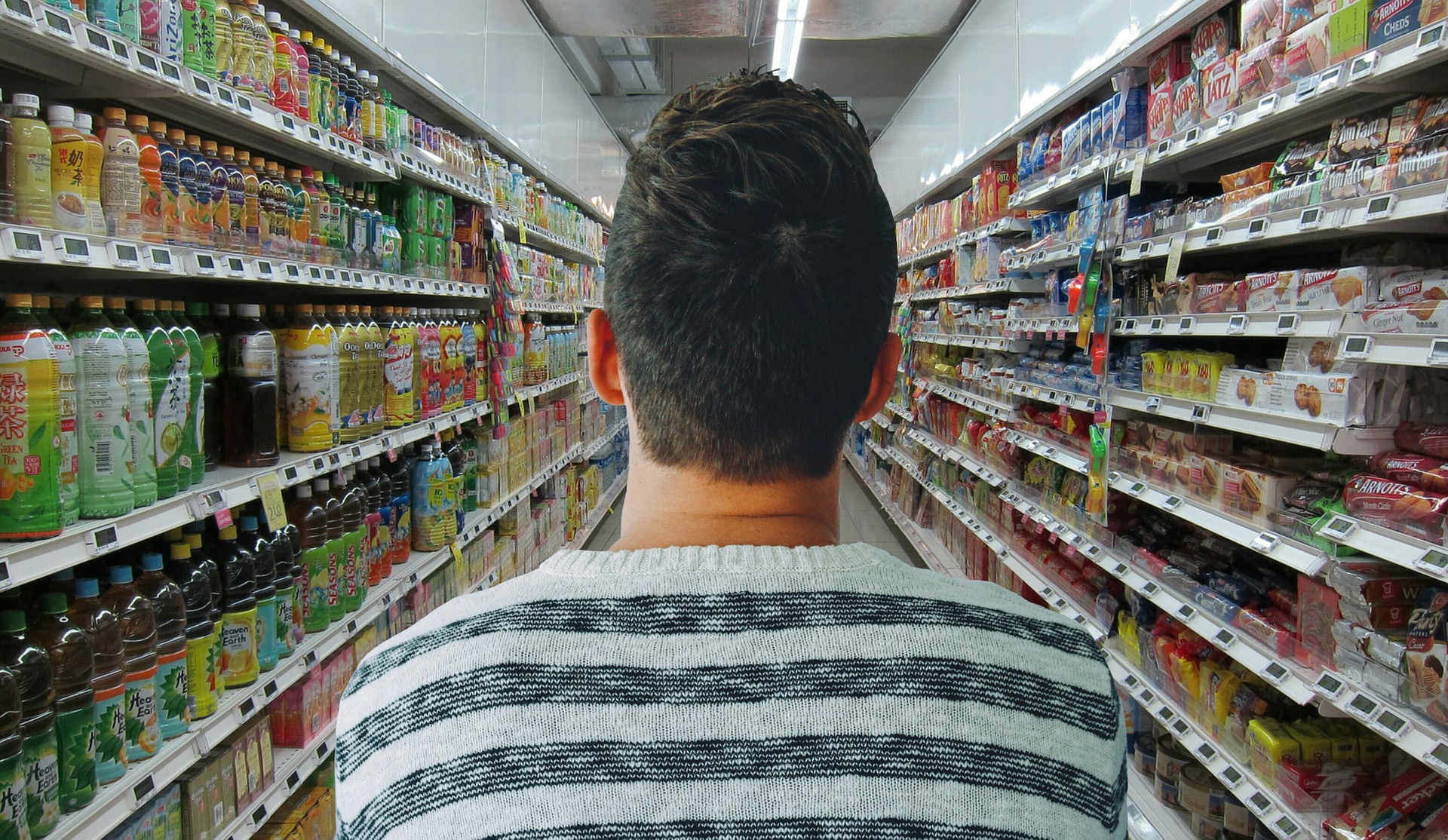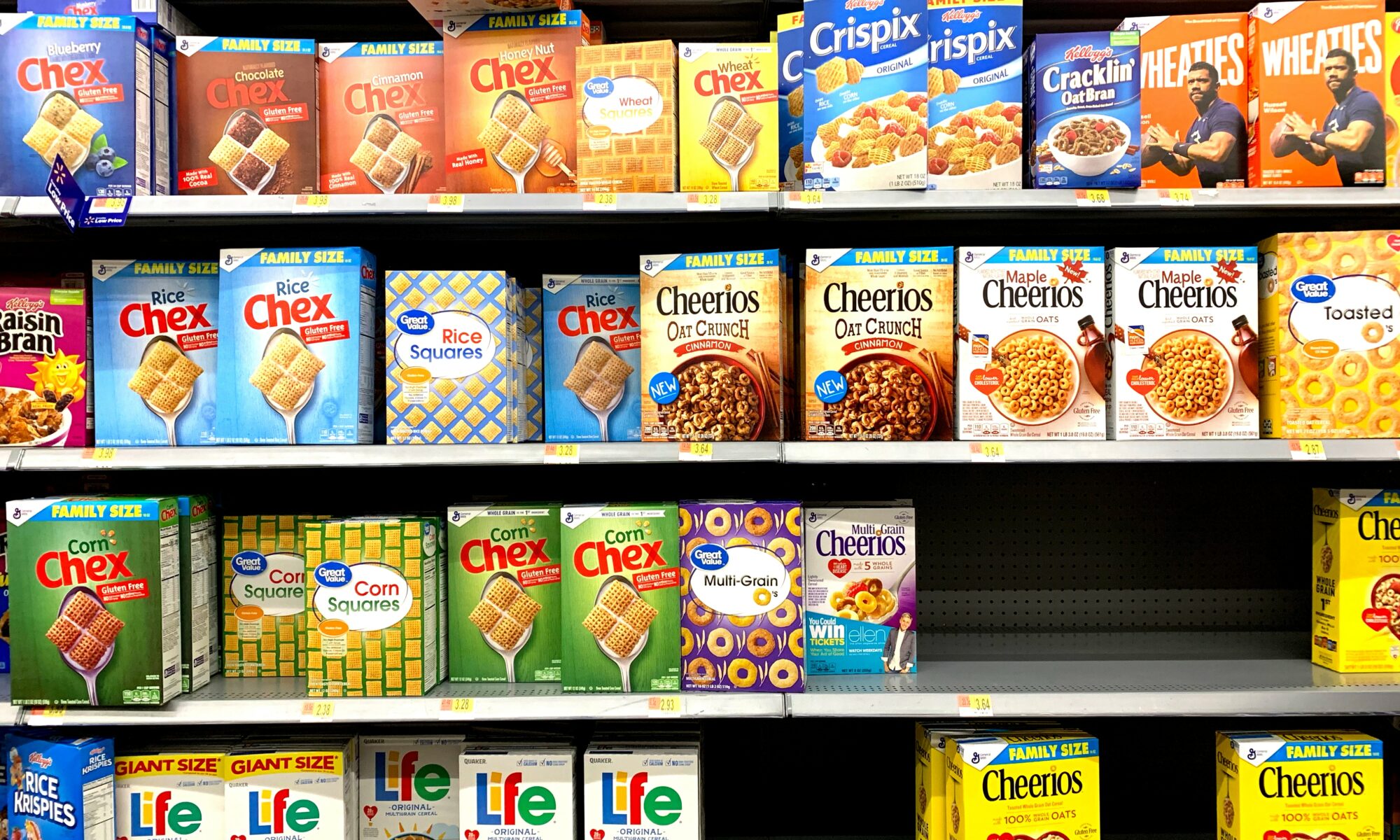Do you want to reverse your prediabetes diagnosis?
Tracking how many carbs we consume each day is a part of getting back to normal blood sugar levels.
To count carbs in packaged foods, we have to read nutrition labels, which is boring and necessary.
For foods that are not packaged, such as single apples at the store or elephant ears at Saturday market, we find the carb count with apps or websites or books.
In this post, we’re focusing on how to find the carb count in packaged foods.
Nutrition labels are on most food packaging. Scanning the label, we’re looking for total number of servings in a container, serving size, and carb count per individual serving.

On our sample label we find:
Total number of servings – 8
Individual serving size – 2/3 cup
Carb count per serving – 37g
Sugars and fiber are already included on the label’s total carb count. However, for our purposes, we subtract the fiber because our bodies don’t digest it.
For us, the total carb count is 37g – 4g (fiber count) = 33g carbs per serving.
Remember that the nutritional info on the label is for an individual serving, not for all of the food in the container.
If we eat two servings, we need to increase our carb count. So, if we eat 1 1/3 cups of whatever this is, our carb count would be 66g, not 33g. 33g x 2 servings = 66g.
If we eat only half of one serving, then divide the carb count in half. In this case, carbs for 1/2 of one serving (33g) would be 16.5g.
One of the problems with this “serving size” concept is that a serving size can vary depending on the food and the manufacturer. This is why we have to read every label.
Now we know how to use a nutrition label to accurately count carbs.
It will be a hassle at first. But, once you get in the habit, it does become easier and you’ll find yourself doing it without much thought.
But do it you must, so start counting!

